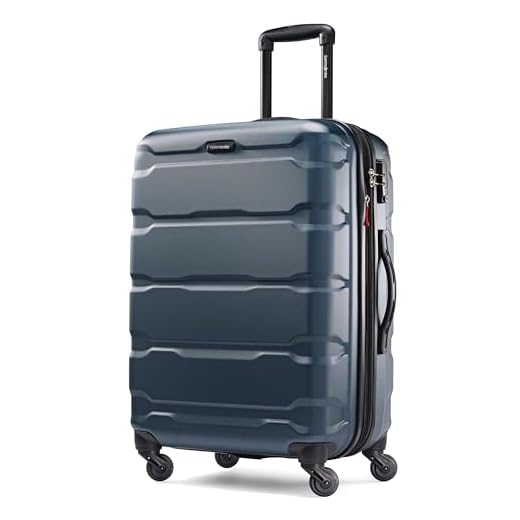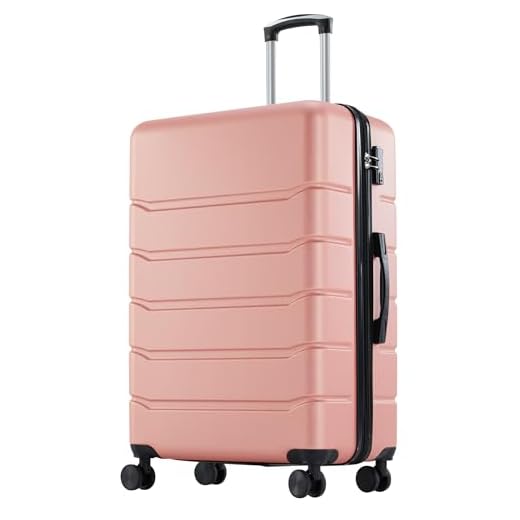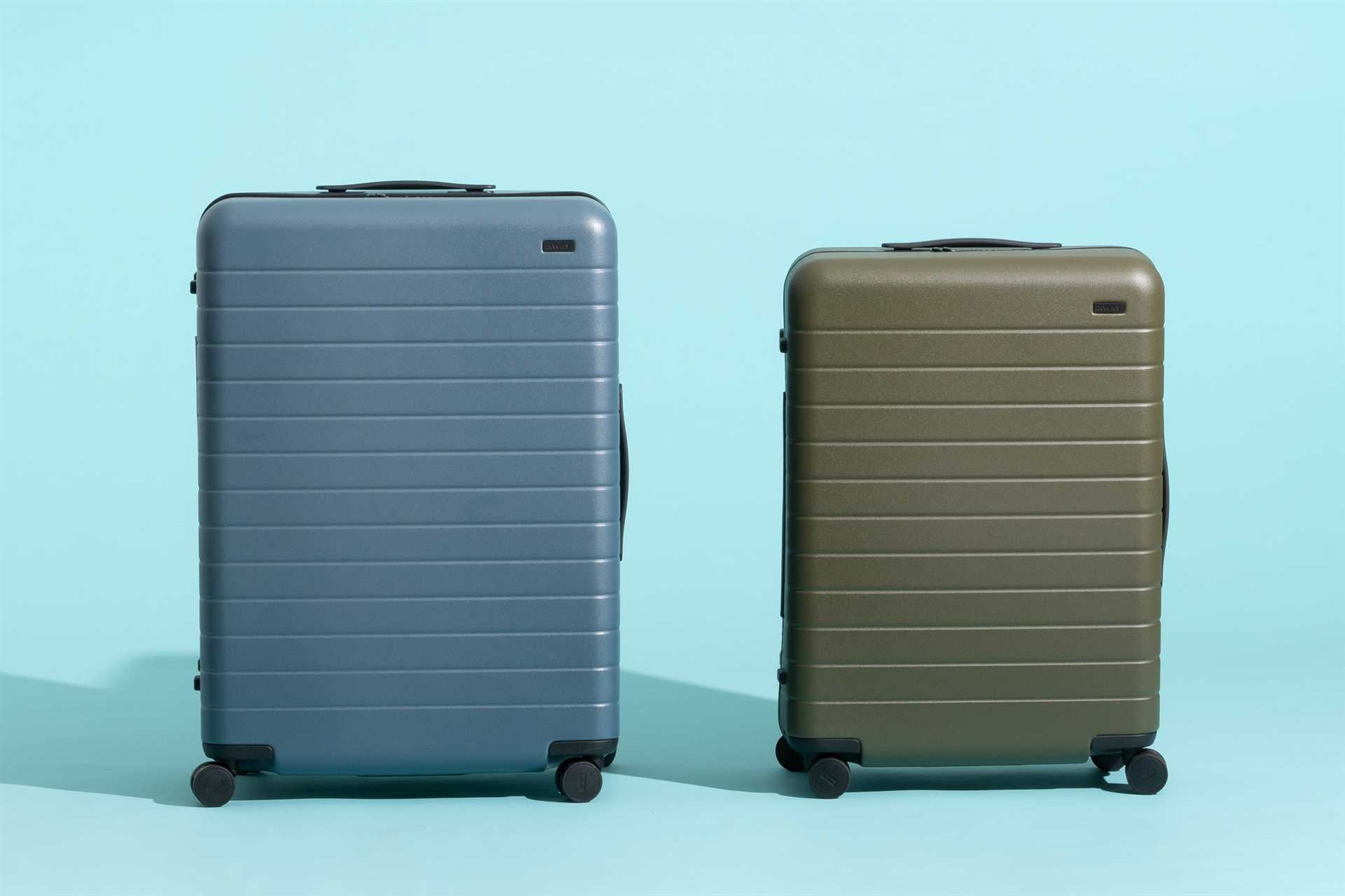




When selecting a suitcase for your next flight, prioritize durability and size regulations. A well-constructed piece will withstand the rigors of handling while ensuring your belongings stay secure. This article provides insights into various options available on the market, highlighting their features and benefits.
Travelers seeking to avoid common pitfalls will find this guide particularly valuable. From lightweight designs to those with multiple compartments, we explore a range of products that cater to different needs and preferences. Additionally, we touch on essential features like wheels, handles, and zippers, which can significantly impact user experience.
In this article, you’ll learn about popular brands, customer reviews, and practical tips for maintaining your gear. Whether you’re a frequent flyer or planning a one-time getaway, our recommendations will help you make an informed decision, ensuring a smoother travel experience.
Best Options for Checked Bags in Air Travel
Choosing the right bag for checked baggage is vital for a hassle-free experience at the airport. Durability and functionality are key attributes to consider. Look for materials like polycarbonate or ballistic nylon, which offer excellent resistance to wear and tear.
Size is another significant factor; bags should comply with airline regulations to avoid extra fees. A capacity of 24 to 30 inches is typically suitable for longer trips, providing ample space without being overly cumbersome. Features such as spinner wheels enhance maneuverability, making it easier to navigate through busy terminals.
Features to Consider
- Security: Choose bags with integrated locks or TSA-approved locks for added safety.
- Weight: Lightweight designs help maximize packing capacity without exceeding airline weight limits.
- Compartments: Multiple pockets and compartments help keep items organized and accessible.
- Warranty: A good warranty indicates the manufacturer’s confidence in their product’s durability.
When selecting a checked bag, prioritize your travel needs and personal style. By focusing on durability, size compliance, and convenient features, you can ensure a smoother travel experience.
Durability: Key Materials for Checked Luggage
Choosing sturdy materials is essential for ensuring the longevity of your travel bags. Polycarbonate and polypropylene are two popular thermoplastics known for their impact resistance and lightweight properties. These materials can withstand the rigors of the baggage handling process and offer protection against drops and rough handling.
Another option is ballistic nylon, a synthetic fabric originally designed for military use. Its dense weave provides excellent abrasion resistance, making it a reliable choice for soft-sided alternatives. Additionally, aluminum frames are often used in high-end models, offering structural integrity and adding a level of security against potential damage.
Comparative Analysis of Materials
| Material | Durability | Weight | Cost |
|---|---|---|---|
| Polycarbonate | High | Light | Moderate |
| Polypropylene | High | Light | Moderate |
| Ballistic Nylon | Moderate to High | Moderate | Higher |
| Aluminum | Very High | Heavy | High |
When selecting an option, consider the balance between weight and durability to match your travel style. Strong zippers and reinforced seams also contribute to the robustness of the design, ensuring that your items remain secure throughout your travels.
Size Matters: Understanding Airline Baggage Restrictions
Knowing the precise dimensions allowed by airlines can prevent unexpected fees and inconveniences. Most carriers have strict guidelines regarding the size and weight of checked items, which vary significantly from one airline to another.
Generally, the maximum dimensions for checked pieces typically range from 62 to 80 linear inches (length + width + height). Exceeding these limits can result in additional charges or refusal of the item at check-in. It’s advisable to measure your bag before arriving at the airport.
Key Factors to Consider
- Weight Limits: Many airlines impose weight restrictions, often ranging from 50 to 70 pounds. Being aware of these limits can help you avoid extra fees.
- Number of Pieces: Airlines usually allow one or two checked items per passenger. Familiarize yourself with your airline’s policy to plan accordingly.
- Fees for Overweight or Oversized Items: Charges for exceeding size or weight limits can be substantial. Always check the airline’s fee structure to avoid surprises.
Using a reliable scale at home can assist in ensuring that your packed items stay within the acceptable range. Prioritize packing essentials and avoid unnecessary items to manage weight effectively.
Understanding the baggage policies specific to your airline can facilitate a smoother travel experience. Always consult the airline’s website for the most current information regarding size and weight restrictions.
Security Features: Safeguarding Your Belongings
Investing in a travel case equipped with advanced security features is essential for protecting your possessions during transit. Look for models that include integrated locks, reinforced zippers, and durable materials to provide a solid defense against theft and damage.
One effective security measure is the inclusion of TSA-approved locks. These locks allow security personnel to open your case without causing damage, while still keeping your items secure from unauthorized access. Products with these locks often come with a resettable combination mechanism, ensuring that you can personalize your security settings.
Additional Security Measures
Beyond locks, consider cases with features that deter tampering and enhance overall protection:
- Hard-shell Construction: A rigid exterior provides better resistance against impacts and potential theft.
- Anti-theft Zippers: Zippers that are designed to prevent easy access can significantly enhance security.
- RFID Protection: Some cases include RFID-blocking compartments to safeguard against electronic theft of personal information.
Choosing a travel case with these features not only protects your belongings but also offers peace of mind throughout your trip. Prioritize safety and durability when making your selection.
Wheels and Handles: Enhancing Mobility and Convenience
Choosing the right wheels and handles can significantly impact the ease of transporting your belongings during travel. A well-designed wheel system allows for smooth maneuverability, reducing strain and effort when navigating through crowded airports or boarding areas.
Consider options with spinner wheels that rotate 360 degrees. This design offers increased agility, making it easier to change direction swiftly. Additionally, larger wheels are often more effective on various surfaces, from airport tiles to uneven pavement.
Handle Design
Handles should provide comfort and durability. Look for telescoping handles that extend smoothly and lock securely in place. Ergonomic grips can enhance comfort during long waits or when pulling your bag over extended distances.
- Dual Handle Systems: A combination of top and side handles can facilitate lifting and loading your gear into overhead compartments or car trunks.
- Sturdiness: Ensure the handles are made of robust materials to withstand the rigors of travel.
Ultimately, selecting the right wheels and handles is about enhancing your travel experience. Prioritize features that cater to your specific needs and preferences, ensuring ease of movement and convenience throughout your trip.
Weight Considerations: Choosing Lightweight Options
Opting for lightweight designs can significantly enhance your travel experience. Heavy items add to the total weight limit imposed by airlines, often resulting in additional fees or the need to repack your belongings at the airport.
When selecting a suitcase or bag, pay attention to the material and construction. Materials like polycarbonate, nylon, or certain types of woven fabrics are known for their durability while being lightweight. A well-constructed piece will not only save you weight but also withstand the rigors of travel.
Factors to Consider
- Material: Choose bags made from lightweight yet strong materials.
- Design: Look for minimalist designs that don’t compromise on functionality.
- Size: Ensure the dimensions align with airline regulations while maximizing internal space.
- Weight: Check the empty weight of the bag before purchasing.
Traveling with a lighter bag allows for increased packing flexibility. You can include additional items without exceeding weight limits, making for a more enjoyable experience.
Consider incorporating packing techniques such as rolling clothing or using packing cubes. These methods can help maintain organization while maximizing space, allowing you to keep your total weight manageable.
Style and Design: Making a Statement While Traveling
Choose a piece that reflects your personality while ensuring functionality. Look for options that blend aesthetics with practicality, allowing you to stand out without compromising on convenience.
Colors and materials play a significant role in making a visual impact. Opt for unique patterns or bold hues that capture attention, but also consider durability and ease of maintenance.
Key Features to Consider
- Material: Select high-quality fabrics like polycarbonate or ballistic nylon for durability.
- Color: Bright or unusual shades can enhance visibility on the baggage carousel.
- Design: Look for innovative shapes or structured designs that offer a modern touch.
- Size: Ensure the dimensions fit airline regulations while still being stylish.
- Functionality: Features like spinner wheels and expandable compartments can add convenience.
Incorporating these elements can elevate your travel experience, making each trip not only functional but also a chance to express your unique style.
Best luggage for airtravel checked
Features
| Part Number | LN20164-28-BL |
| Model | LN20164-28 |
| Color | Black |
| Size | Large Checked |
Features
| Part Number | 68309-2824 |
| Model | 68309-2824 |
| Color | Teal |
| Is Adult Product | |
| Size | Checked-Medium 24-Inch |
Features
| Part Number | OLXLX-28INPK2141 |
| Model | OLXLX-28INPK2141 |
| Color | Pink |
| Size | 28 IN |
Features
| Part Number | OLXLX-28INBU2141 |
| Model | OLXLX-28INBU2141 |
| Color | Blue |
| Size | 28 IN |
Features
| Part Number | LN20164-24-OR |
| Model | LN20164-26 |
| Color | Orange |
| Size | Medium Checked |
Video:
FAQ:
What are the key features to consider when choosing checked luggage for air travel?
When selecting checked luggage for air travel, several features are important. First, the size and weight should comply with the airline’s regulations to avoid extra fees. Look for durable materials like polycarbonate or ballistic nylon that can withstand rough handling. Security features, such as TSA-approved locks, can provide peace of mind. Additionally, consider the design of wheels and handles for ease of transport. Lastly, organizational compartments can help keep belongings tidy and accessible.
How do I choose the right size of checked luggage for my trip?
The right size of checked luggage depends on the duration and nature of your trip. For a weekend getaway, a smaller suitcase (around 20-24 inches) is usually sufficient. For longer trips, opt for larger sizes (28-30 inches) that can accommodate more items. Always check your airline’s baggage policies, as size limitations can vary. Additionally, consider your packing style; if you tend to overpack, a larger suitcase may be necessary, whereas minimalist packers might manage with a smaller option.
Are hard-shell or soft-shell suitcases better for air travel?
Both hard-shell and soft-shell suitcases have their advantages. Hard-shell luggage typically offers better protection for fragile items due to its rigid exterior. It’s also often more water-resistant, which can be beneficial in rainy conditions. On the other hand, soft-shell suitcases tend to be lighter and more flexible, allowing for easier storage in tight spaces. They often have external pockets for quick access to essentials. Ultimately, the choice depends on personal preference and travel needs.
What brands are recommended for checked luggage?
Several brands are highly regarded for their quality checked luggage. Samsonite is known for its durability and innovative designs. Away offers stylish and functional options with a lifetime warranty. Rimowa is famous for its premium aluminum and polycarbonate suitcases, though they come at a higher price point. Other noteworthy brands include Travelpro, which is popular among frequent flyers, and Delsey, known for its lightweight and practical designs. It’s beneficial to read reviews and compare features before making a purchase.
How can I ensure my checked luggage is secure during air travel?
To enhance the security of your checked luggage, use a TSA-approved lock to protect your belongings while still allowing airport security personnel to inspect your bag if necessary. Avoid placing valuable items in your checked luggage; instead, carry them in your hand luggage. Label your suitcase with your contact information, and consider using a unique strap or identifier to make it easily recognizable. Lastly, take photos of your luggage and its contents as a precaution in case it gets lost or damaged.








